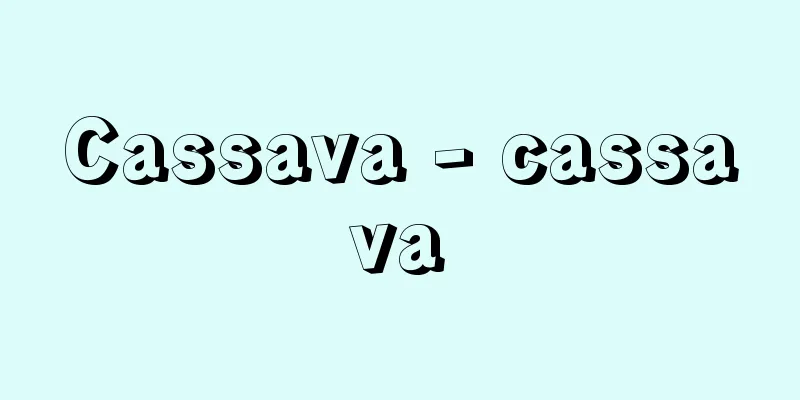Advertising photos

|
Also known as commercial photography, it is produced to meet the needs of advertisers and to present to consumers the appearance of the product itself or an image related to the product as a photographic image. In reality, it is designed in combination with the product name and words (copy) that convey the advertising message, and many of them also function as illustrations. Photographs are used overwhelmingly in modern advertising expressions that use print media such as publications and posters, because photographs have a concrete and direct appeal. Moreover, together with television advertising, today's advertising photographs have become a cultural phenomenon that symbolically represents the trends in modern customs. [Kouen Shigemori and Osamu Hiraki] History of Advertising PhotographyIt is unclear when it first emerged, but it is certain that it was around 1900, when halftone printing was invented and it became possible to print photographs directly on newspapers. However, it is said that the first fashion photographs were published in 1893 in the American magazine "Vogue," which was launched the previous year. Also, the "Jones Encyclopedia of Photography," which is estimated to have been published around 1910, states that there was already a lively demand for advertising photographs. However, it did not really take off until the 1920s, when photography was combined with design, and the emergence of typophotography, which organically combines photographs and type, led to a revolutionary advancement in advertising and public relations expressions such as posters and editorials. During this period, new photographic techniques such as photograms and photomontages were also actively used in advertising photography. After World War II, with the remarkable development of graphic journalism and the beginning of an era of fierce corporate advertising and public relations, advertising photography also made great progress, especially in the United States. As early as 1884 (Meiji 17) in Japan, at the recommendation of photographer Ogawa Kazumasa (1860-1929), Iwatani Shokai erected a glass billboard measuring 160cm (about 4.8m) in height in a storefront in Ginza to advertise Tengu tobacco. In the latter half of the Meiji period, portraits of geisha were used to advertise beer, and in 1922 (Taisho 11), a poster for Akadama Port Wine, produced by Kawaguchi Photo Studio, appeared. In 1930 (Showa 5), the first international advertising photography exhibition was held, sponsored by the Asahi Shimbun Company, and Nakayama Iwata won first prize for his Fukusuke tabi socks. After World War II, the 1960s saw rapid growth and rapid development. In particular, the Tokyo Olympics poster by Hayasaki Osamu (1933-93) was a work that demonstrated the high standard of Japanese advertising photography. Following him, Noriaki Yokosuka (1937-2003) and Kazumi Kurigami (1936- ) produced many works with innovative sensibilities. In 1958, the Japan Advertising Photographers Association (APA) was formed. [Kouen Shigemori and Osamu Hiraki] Advertising photographyThere are five main areas of advertising photography: (1) Industrial photography: Used primarily for public relations purposes for corporate activities. (2) Still life: Product photographs intended to introduce the product in detail. (3) Table-top: A photograph in which an item is placed on a table and taken in the style of a still life. (4) Food illustration: Food advertising photography, which is different from food photography. (5) Fashion The purpose is to show textile materials and specific fashion styles. In addition, they are used in media such as calendars, posters, catalogs, inserts, etc. There are two types of advertising photographers: freelancers and those who belong to an advertising agency or advertising production company. [Kouen Shigemori and Osamu Hiraki] "Thinking about Advertising Photography" by Shigemori Koen (1964, Seibundo Shinkosha)" ▽ "Complete Collection of Japanese Photography 11: Commercial Photography" edited by Daiichi Art Center (1986, Shogakukan)" ▽ "100 Years of Japanese Advertising Photography" edited by Fushimi Fumio (1986, Kodansha)" ▽ "Tokyo Advertising Photography" by Goto Shigeo (1994, Little More)" ▽ "Yearbook: Japanese Advertising Photography 2002" edited by the Japan Advertising Photographers Association (2001, Pie Books) [References] | | |Source: Shogakukan Encyclopedia Nipponica About Encyclopedia Nipponica Information | Legend |
|
商業写真、コマーシャル・フォトともいう。広告主の要望に即して、商品そのものの様態や商品に関連するイメージを、写真画像として消費者に提示するために制作される。実際には商品名や広告メッセージを託されたことば(コピー)と組み合わせてデザインされ、イラストレーション(図解)としての役割をもつものが多い。出版物やポスターなど印刷媒体を介した現代の広告表現では、圧倒的に写真が使われているが、これは写真が具体的で直接的な訴求力をもっているからである。のみならずテレビ広告とともに、今日の広告写真は、現代風俗の動向を象徴的に代弁する文化的現象にもなっている。 [重森弘淹・平木 収] 広告写真の歴史いつ発生したかはつまびらかではないが、網版印刷が発明され、新聞に直接写真印刷が可能となった1900年ごろであることは間違いない。しかし1893年、その前年に創刊されたアメリカの『ボーグ』誌に初めてファッション写真が掲載されたといわれる。また1910年ごろに発行されたと推定される『ジョーンズ写真百科事典』には、すでに広告写真の活発な需要のあったことが記載されている。しかし本格的な展開は写真がデザインと結び付く20年代で、写真と活字で有機的に構成されたタイポフォトグラフィの出現で、ポスターやエディトリアルなどの宣伝、広告表現が画期的に進歩することになった。この時期、フォトグラムやフォトモンタージュなどの新しい写真技法も盛んに広告写真に用いられた。第二次世界大戦後は、グラフ・ジャーナリズムの目覚ましい発達と、激烈な企業の宣伝、広告時代を迎えて、アメリカを中心に広告写真も大いに進歩した。 日本では1884年(明治17)、早くも写真家小川一真(かずまさ)(1860―1929)の勧めで、岩谷商会が天狗煙草(てんぐたばこ)の宣伝に「一丈六尺」(約4.8メートル)のガラス製広告塔を銀座の店頭に製作している。また明治の後半になるとビール広告のために芸者のポートレートが使われ、1922年(大正11)には河口写真館作製の赤玉ポートワインのポスターが出現した。30年(昭和5)には朝日新聞社主催第1回国際広告写真展が開かれ、中山岩太(いわた)が福助足袋(たび)で一等賞となっている。第二次世界大戦後も60年代に入ると高度成長時代を迎えて一挙に発展する。とくに早崎治(おさむ)(1933―93)による東京オリンピックのポスターは、日本の広告写真の高い水準を物語る作品となった。それに続いて横須賀功光(よこすかのりあき)(1937―2003)や操上和美(くりがみかずみ)(1936― )らが斬新(ざんしん)な感覚の作品を数多く制作した。なお1958年には日本広告写真家協会(APA)が結成された。 [重森弘淹・平木 収] 広告写真の分野広告写真は、おもに以下の五つの分野がある。 (1)インダストリアル・フォトindustrial photo(産業広告写真) 主として企業活動の広報として使われる。 (2)スチル・ライフstill life 商品写真で、商品の具体的な紹介が目的。 (3)テーブル・トップtable-top 卓上に商品を置き静物構成風に撮ったもの。 (4)フード・イラスト 食品広告写真で、料理写真とは異なる。 (5)ファッション 繊維の材質や、具体的なモードをみせるのが目的。 このほか、カレンダー、ポスター、カタログ、折込広告などのメディアにそれぞれ使われている。また広告写真家にはフリーランスと、広告代理店あるいは広告制作プロダクションに所属する者との二つのタイプが存在する。 [重森弘淹・平木 収] 『重森弘淹著『広告写真を考える』(1964・誠文堂新光社)』▽『第一アートセンター編『日本写真全集11 コマーシャルフォト』(1986・小学館)』▽『伏見文男編著『日本の広告写真100年史』(1986・講談社)』▽『後藤繁雄著『東京広告写真』(1994・リトル・モア)』▽『日本広告写真家協会監修『年鑑 日本の広告写真 2002』(2001・ピエ・ブックス)』 [参照項目] | | |出典 小学館 日本大百科全書(ニッポニカ)日本大百科全書(ニッポニカ)について 情報 | 凡例 |
Recommend
Selim III (English spelling)
...In response, successive sultans sought to re-e...
Shelduck (Tsukushima duck) - Shelduck (English spelling)
A bird of the Anatidae family (illustration). It b...
Anthocoris japonicus (English spelling)
...It is a dark brown insect that lives on rice s...
Bruttium
...It occupies the toe of the boot-shaped Italian...
National Guard
… [Command and Civilian Control] Under the United...
Clark, EB (English spelling) ClarkEB
...This caused the collapse of the "spirit o...
Amagase [town] - Amagase
A former town in Hita County, western Oita Prefect...
Charles le Brun
1619‐90 A leading painter and decorator at the Fre...
Comparative planetology
This is an academic field that seeks to understand...
Bed blending
… There are two ways to blend ores (iron ore, non...
Ear speculum
… [Endoscope structure] Different instruments are...
Kikyouya Kawachi - Kikyouya Kawachi
...The "Gozen Kashi Hidensho" (1718) st...
Kawabe Ichibangumi Furudonya
…The increase in demand in the cities gave rise t...
How to identify -
This method of public notice has been recognized ...
Bhartṛhari (English spelling)
[Raw material] 450 yen [Died] c. 500. Indian gramm...









